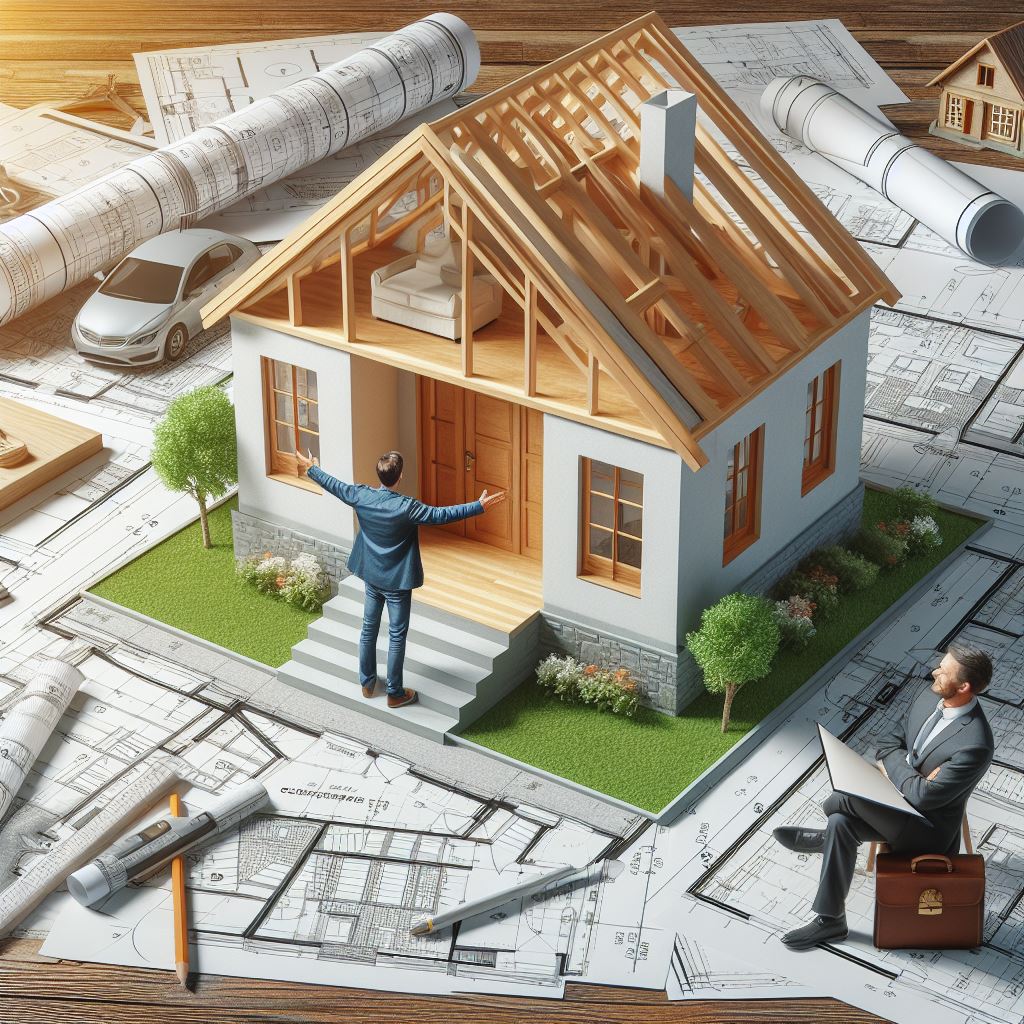Introduction
Zoning laws play a crucial role in shaping the landscape of new construction projects.
These laws dictate how land can be used within a specific area, outlining where residential, commercial, industrial, and recreational spaces are permitted.
Understanding zoning regulations is essential for developers, architects, and homeowners alike as they navigate the complexities of building in urban and suburban environments.
In this blog post, we will delve into the intricate relationship between zoning laws and new construction.
We’ll explore how these regulations influence the design, location, and feasibility of building projects.
By understanding the purpose and impact of zoning laws, readers will gain insights into the challenges and opportunities associated with construction in different areas.”
Understanding Zoning Laws
Zoning laws and their purpose
Zoning laws are regulations that control the use and development of land within a specific area.
The purpose of zoning laws is to ensure orderly growth, protect property values, and promote public health and safety.
These laws help separate different land uses to minimize conflicts between residential, commercial, and industrial activities.
The different types of zones (residential, commercial, industrial, etc.)
Residential zones are designated for single-family homes, apartments, and other housing options.
Commercial zones are intended for businesses, such as retail stores, offices, and restaurants.
Industrial zones accommodate factories, warehouses, and other manufacturing or processing facilities.
Other types of zones include agricultural, recreational, mixed-use, and special-purpose zones.
The role of local governments in establishing and enforcing zoning laws
Local governments, such as city councils or planning boards, are responsible for creating and implementing zoning laws.
They assess community needs and priorities to determine appropriate land use regulations.
Local governments also consider input from residents, businesses, and other stakeholders in the zoning process.
Enforcement of zoning laws is typically done by zoning officials or code enforcement officers who ensure compliance.
These officials conduct inspections, issue permits, and address violations to maintain compliance with zoning regulations.
Local governments may also update zoning laws periodically to reflect changes in community needs or development trends.
In fact, zoning laws play a crucial role in shaping the development and organization of communities.
By separating different land uses, zoning laws help maintain harmony between residential, commercial, and industrial activities.
Local governments are responsible for establishing and enforcing these laws to ensure orderly growth and protect the interests of their communities.
Understanding zoning laws is essential for developers, homeowners, and businesses to comply with regulations and contribute to the overall functionality and aesthetics of a neighborhood or city.
Read: Impact of Zoning on Real Estate Value
Impact of Zoning Laws on New Construction
Zoning laws play a critical role in shaping the direction and impact of new construction projects.
By implementing regulations and guidelines, these laws ensure that development aligns with community vision and long-term goals.
Let’s explore the specific ways zoning laws affect new construction.
Limitations on Land Use
- Zoning laws dictate what can be built in specific zones, effectively separating residential, commercial, and industrial areas. This helps establish a balance between different land uses and prevents incompatible developments.
- Restrictions on property size, building height, setbacks, and density are crucial components of zoning laws. They ensure that developments within a zone maintain a harmonious scale and intensity, keeping the community character intact.
Preservation of Community Character
- Zoning laws aim to maintain the aesthetics and atmosphere of an area by preserving its unique features and identity. This ensures that new construction projects enhance the overall community experience.
- Architectural guidelines play a significant role in preserving community character. They outline design standards that reflect the local architectural style, ensuring new buildings complement the existing built environment.
- Historical preservation is another aspect considered in zoning laws. By protecting historic landmarks or districts, these laws help maintain a sense of history and heritage within the community.
- Design considerations also come into play, ensuring new construction projects are visually appealing, functional, and environmentally sustainable. These considerations contribute to the overall attractiveness and livability of an area.
Infrastructure Considerations
- Zoning laws take into account the availability and capacity of utilities and services essential for new construction. It ensures that projects have access to water, electricity, sewage systems, and other necessary infrastructure.
- Addressing traffic, parking, and public transportation needs is crucial for community development and functionality. Zoning laws allocate spaces for roads, parking lots, and public transit stations to minimize congestion and enhance mobility.
In essence, zoning laws have a profound impact on new construction projects.
They provide a framework for orderly development, preserving community character, and ensuring the availability of infrastructure and services.
By adhering to these laws, developers and communities can work together to create sustainable, aesthetically pleasing, and functional environments that meet the needs of all stakeholders.
Read: Lease Agreements: Laws and Best Practices

Challenges and Controversies
Zoning laws have a significant impact on new construction projects, shaping the built environment and influencing the social and economic dynamics of communities.
While zoning regulations serve to organize land use and maintain community standards, they also give rise to both challenges and controversies.
In this section, we will explore some of the key issues faced when it comes to zoning laws and new construction.
Gentrification concern
- Zoning laws can have a profound impact on housing affordability and the potential displacement of existing residents. In certain cases, zoning regulations can contribute to the process of gentrification, making it difficult for lower-income individuals or families to afford housing in rapidly developing neighborhoods.
- The issue of gentrification has sparked debates among policymakers, urban planners, and community members. These discussions center around finding solutions to mitigate the negative effects of gentrification, such as the loss of affordable housing, cultural displacement, and community fragmentation. Various measures, such as inclusionary zoning or affordable housing quotas, have been proposed as potential solutions to strike a balance between development and social equity.
Balancing economic development and community welfare
- Critics argue that stringent zoning laws can hinder economic growth and job creation. Excessive zoning restrictions in certain areas may deter businesses from investing or expanding, limiting opportunities for economic development.
- It is essential to strike a balance between economic development opportunities and community interests. Zoning laws should consider the needs and aspirations of the community while promoting sustainable growth. This might involve zoning flexibility to accommodate mixed-use developments, encouraging entrepreneurship, and preserving the local character and heritage.
Regulatory challenges and bureaucratic processes
- Developers often encounter hurdles and delays due to the complex regulatory requirements associated with zoning laws. Obtaining necessary permits, approvals, and complying with various zoning regulations can be a time-consuming and costly process, making it challenging to initiate and complete new construction projects efficiently.
- Efforts are being made to streamline the zoning process and make it more efficient. This includes implementing online platforms for permit applications and information dissemination, adopting standardized zoning codes, and fostering collaborations between government agencies and developers. By simplifying and streamlining the bureaucratic processes, developers can navigate the zoning landscape more effectively, leading to increased construction activity and economic growth.
In a nutshell, zoning laws significantly affect new construction projects, with their implementation having both positive and negative implications.
Gentrification concerns highlight the need for inclusive zoning policies that prioritize housing affordability and community well-being.
Balancing economic development and community welfare is a challenging task but can be achieved through thoughtful planning and flexible zoning regulations.
As regulatory challenges and bureaucratic processes can hinder development, efforts to streamline the zoning process should continue to ensure efficient and timely construction activities.
Read: Understanding Property Tax Assessment
The Future of Zoning Laws
Zoning laws, as we have seen, play a crucial role in shaping the built environment.
They have long been the backbone of urban planning and development, ensuring the orderly growth of cities and towns.
However, as the world continues to evolve, so do our needs and priorities.
This begs the question: what does the future hold for zoning laws?
Emerging trends in zoning regulations
Innovative approaches to zoning, such as mixed-use development and form-based codes
Zoning regulations have traditionally focused on separating land uses, with residential areas separate from commercial and industrial zones.
However, emerging trends in zoning regulations are challenging this conventional approach.
One increasingly popular approach is mixed-use development, which promotes the integration of different land uses within the same area.
By creating vibrant, walkable communities with a mix of residential, commercial, and recreational spaces, mixed-use development aims to reduce urban sprawl, increase convenience, and foster a sense of community.
Another innovative approach gaining traction is the use of form-based codes.
Unlike traditional zoning, which primarily focuses on the type of land use, form-based codes emphasize the physical form and design of buildings and spaces.
By regulating the scale, massing, and architectural characteristics of developments, form-based codes aim to create visually appealing and cohesive neighborhoods that enhance the overall quality of the built environment.
The impact of technology and sustainability on zoning laws
Technology and sustainability are two key factors influencing the future of zoning laws.
Rapid advancements in technology are reshaping the way we live, work, and interact with our surroundings.
As smart cities become a reality, zoning laws will need to adapt to accommodate innovative technologies such as autonomous vehicles, renewable energy systems, and smart infrastructure.
Zoning regulations will play a crucial role in ensuring the seamless integration of these technologies into the urban fabric while preserving safety, environmental quality, and equity.
Moreover, the urgent need to address climate change and promote sustainable practices is putting pressure on zoning laws.
Many communities are now incorporating sustainability principles into their zoning regulations by incentivizing green building practices, promoting energy-efficient designs, and requiring environmental impact assessments for new developments.
This shift towards more sustainable zoning practices aims to mitigate the environmental impact of new construction and create resilient communities that can adapt to the challenges of a changing climate.
The potential for zoning law reforms
The need for periodic review and updates to zoning laws
Zoning laws, like any regulatory framework, should not remain static.
They must evolve and adapt to respond to changing social, economic, and environmental dynamics.
Periodic review and updates to zoning laws are essential to ensure their continued relevance and effectiveness.
By regularly evaluating the appropriateness of zoning regulations, communities can identify outdated provisions, address emerging issues, and align their goals with evolving needs.
The importance of community engagement and stakeholder input in shaping future zoning policies
The success of any zoning reform relies on the involvement of the community and stakeholders.
Engaging community members and incorporating their input throughout the zoning process can lead to more inclusive, equitable, and effective zoning policies.
By involving residents, businesses, advocacy groups, and other stakeholders, a diverse range of perspectives can be considered.
This participatory approach not only increases public trust and transparency but also ensures that zoning laws reflect the needs, values, and aspirations of the community they serve.
All in all, the future of zoning laws holds both exciting opportunities and challenges.
As new trends emerge and societal priorities shift, zoning regulations will need to be flexible and adaptive.
Embracing innovative approaches, integrating technology and sustainability, periodically reviewing and updating zoning laws, and fostering community engagement are crucial steps towards shaping a future where zoning laws promote thriving, inclusive, and sustainable communities.
Read: The Ins and Outs of Property Foreclosure
Conclusion
Throughout this blog post, we’ve delved into the intricate relationship between zoning laws and new construction.
We began by exploring how zoning regulations dictate land use, density, and building design within specific areas.
From there, we examined the impact of zoning on urban development, emphasizing its role in shaping the character and functionality of neighborhoods.
Additionally, we highlighted how zoning laws can either facilitate or hinder new construction projects, depending on their alignment with community needs and priorities.
Zoning laws play a pivotal role in influencing the landscape of new construction.
By delineating permissible land uses, regulating building heights, and imposing design standards, zoning ordinances directly impact the form and function of our built environment.
These regulations not only ensure compatibility between neighboring properties but also safeguard public health, safety, and welfare.
Moreover, zoning serves as a tool for promoting sustainable development, encouraging mixed land uses, and preserving natural resources.
As such, understanding and adhering to zoning laws is essential for developers, architects, policymakers, and community members alike to foster responsible growth and create vibrant, livable communities.
As citizens invested in the future of our communities, it’s crucial to remain vigilant and participatory in local zoning matters.
Whether attending public hearings, voicing concerns to elected officials, or supporting grassroots advocacy efforts, each of us has a role to play in shaping the trajectory of new construction.
By staying informed about proposed zoning changes, engaging in constructive dialogue, and advocating for equitable and inclusive development policies, we can collectively influence decision-making processes and contribute to the creation of more resilient, equitable, and sustainable built environments.
Together, let’s strive to ensure that our zoning laws reflect the diverse needs and aspirations of our communities, both now and for generations to come.”




